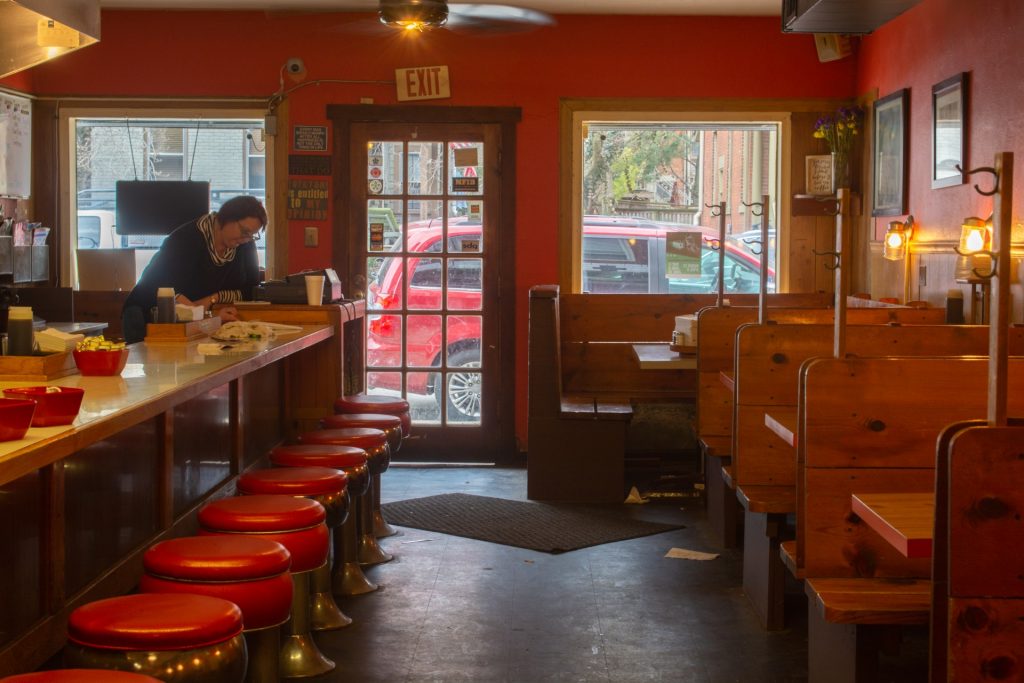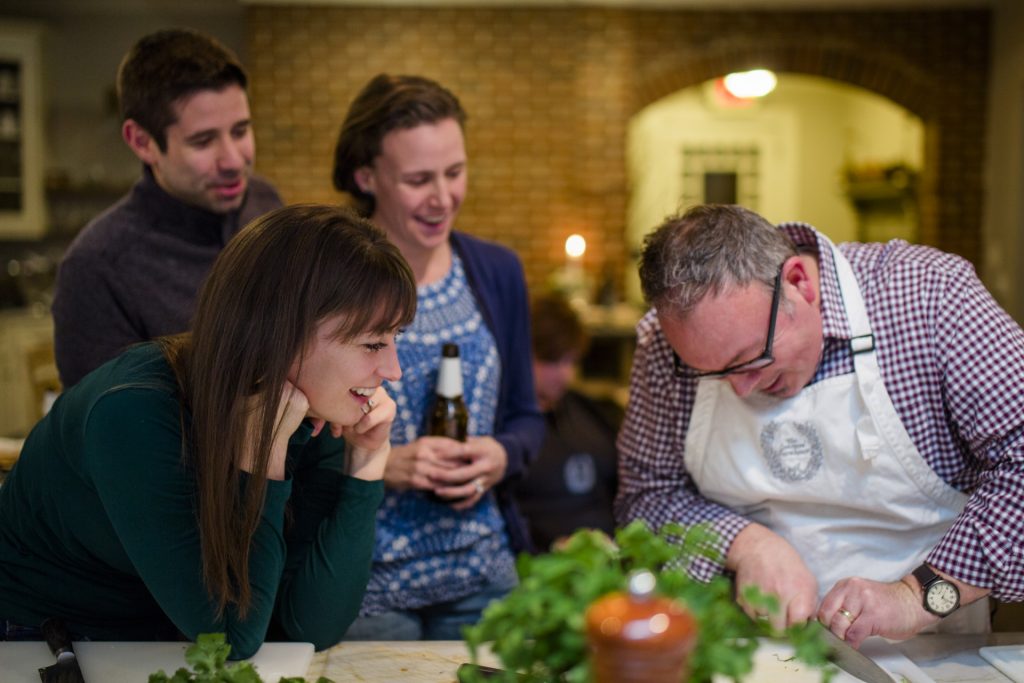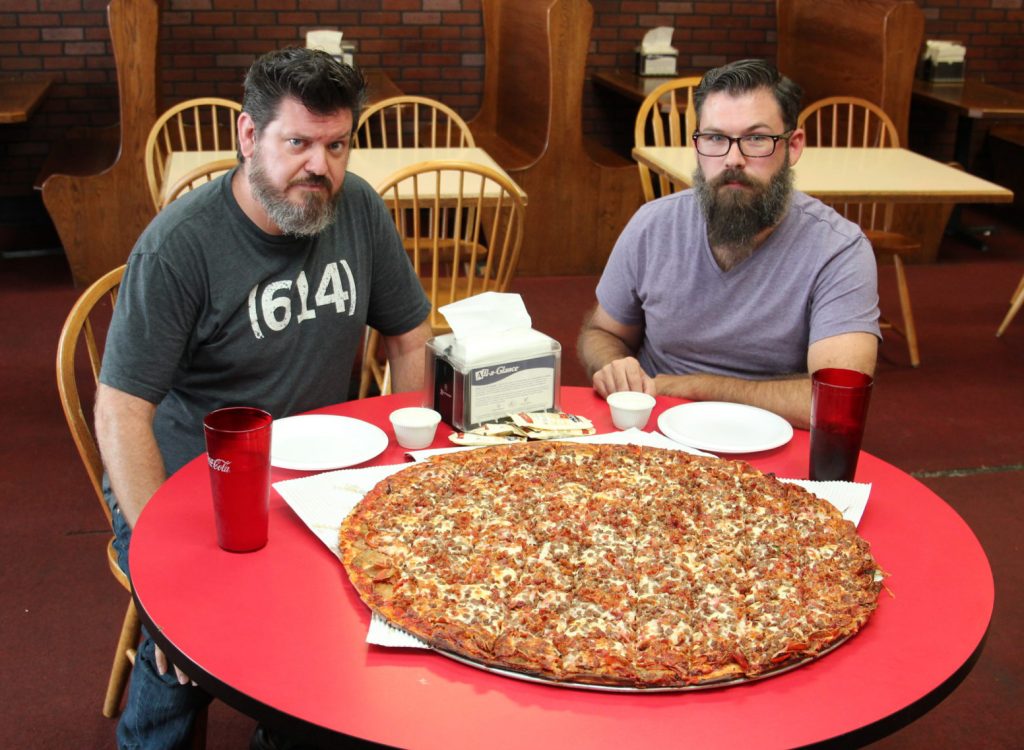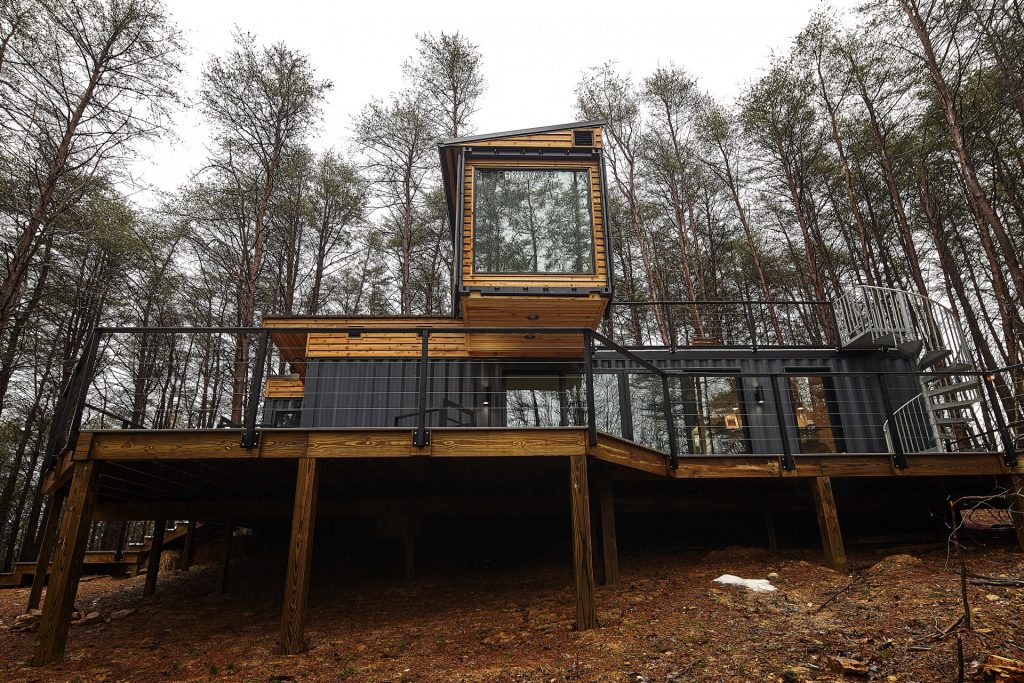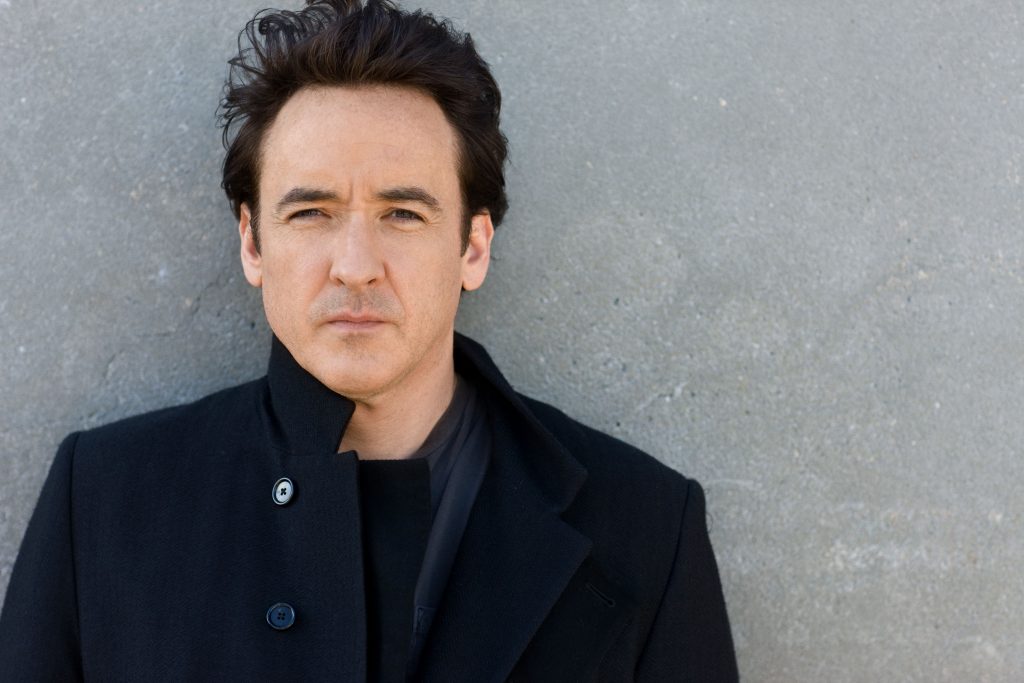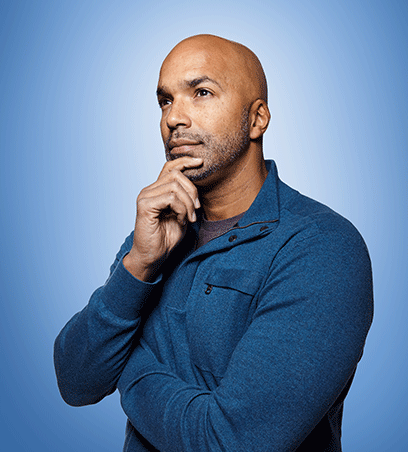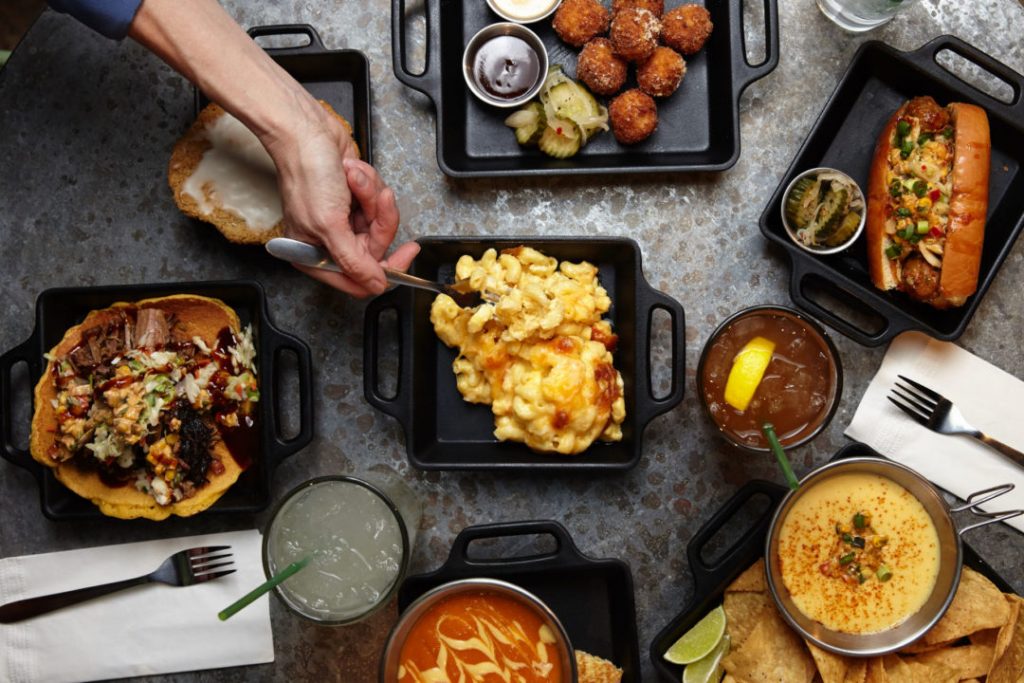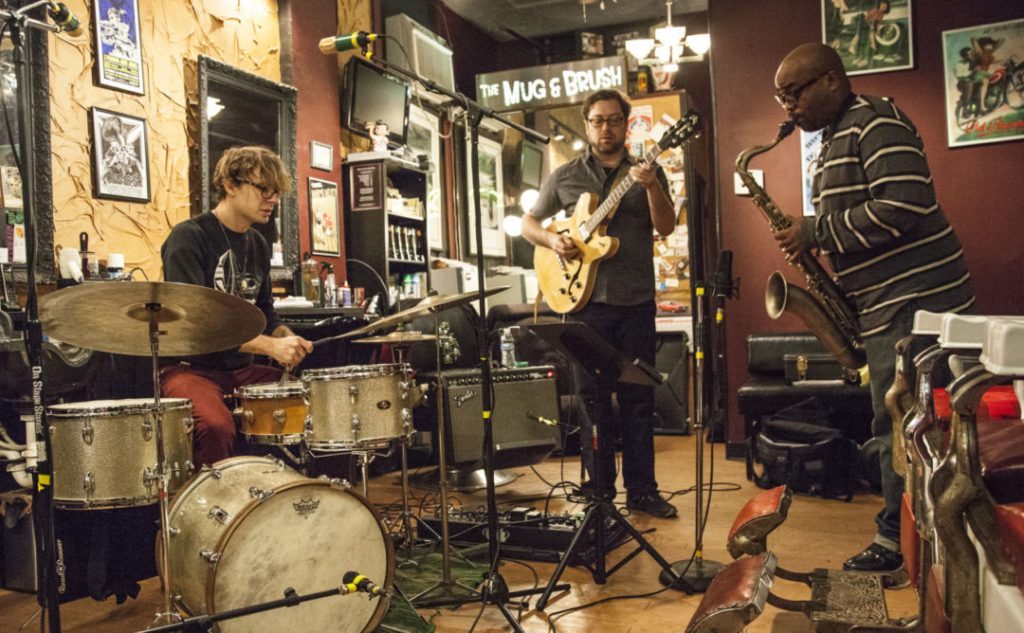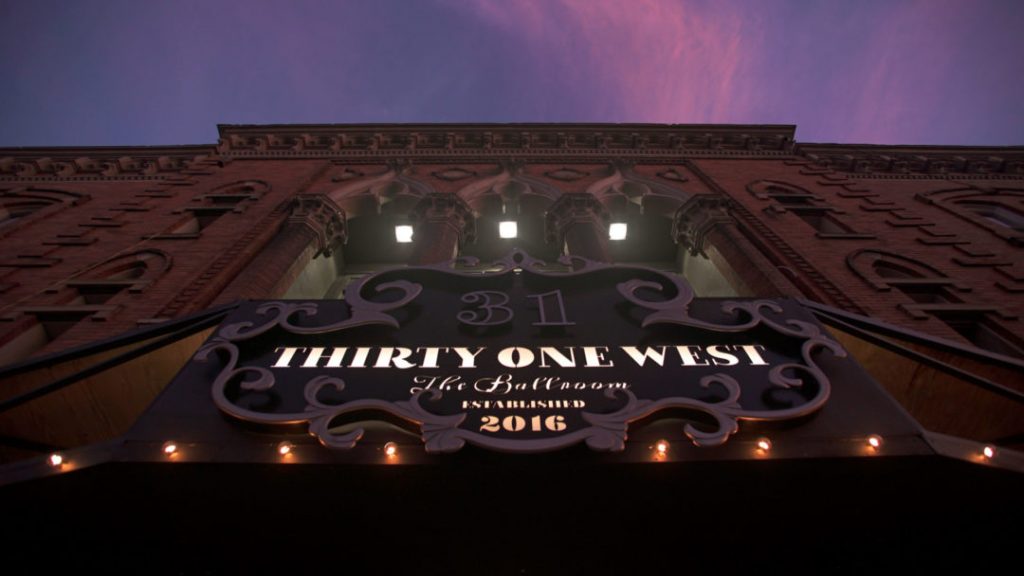Originally published in the April 2019 issue of (614) Magazine
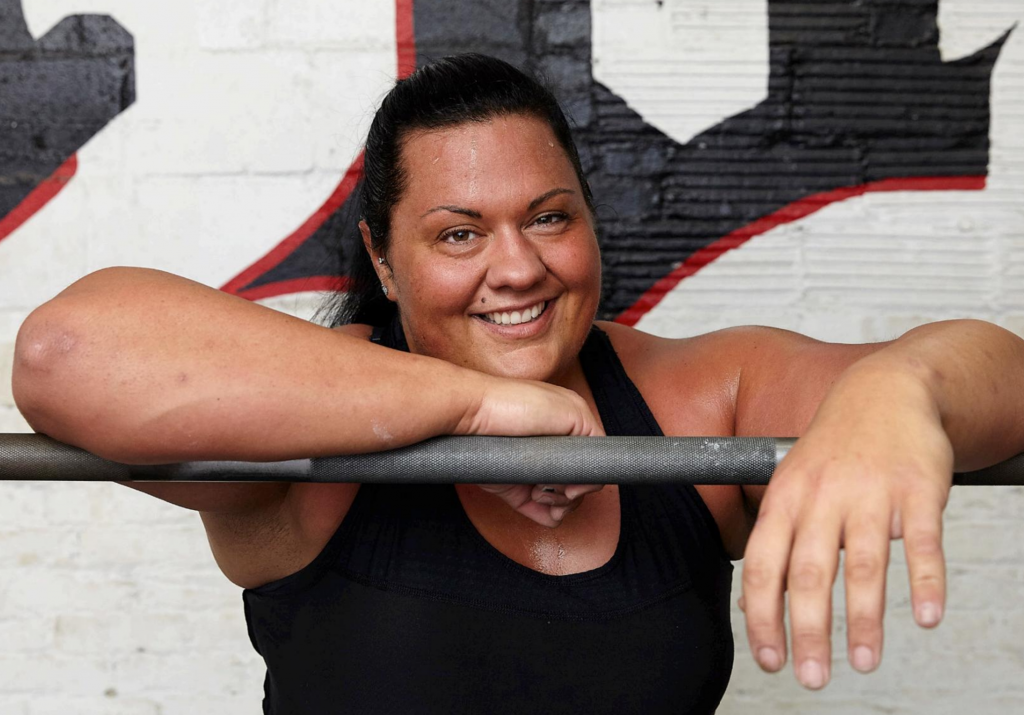
When Brooke Sousa stepped on stage at the Arnold Classic’s strongwoman competition for the first time in 2016, she’d already beaten the odds. The mother of two from Westerville had dropped 115 pounds and completed her first marathon before pivoting to weightlifting. But she was still an unranked amateur with no expectation of even placing.
Sousa finished dead last in every event. It wasn’t the first time.
“Running was something I’d hated since elementary school. When we’d run the mile, I was always the last kid around the block,” she confessed. “At 10 years old, I was 180 pounds. I was the fat kid who hoped I might someday be famous for my artwork.”
She pursued that passion at the Columbus College of Art and Design, but it was her two young daughters who inspired her unlikely origin story — to get in shape and forge a new path. However, when Sousa joined a local gym, it was her raw strength, not her size, that stood out most among her fitness class.
“The lowest weight I could get down to was 215 pounds. I weighed more than that as a teenager, trying to fit in with what America expects a woman to look like,” Sousa recalled. “But I could lift a 15-pound barbell, so they called me She-Hulk and the name stuck.”
That was six years ago. Last summer, she lifted a little more.
At a competition in Norway this past July, Sousa lifted 285 pounds simultaneously with each hand in the “Hercules Hold,” carried nearly 600 pounds in the “Timber Yoke,” and dragged 17 rolling tons in the “Truck Pull” to win the heavyweight division and the title “World’s Strongest Woman.”
That first Arnold measured a different kind of strength. Sousa’s sacroiliac joint, or SI, had locked up her lower back days before the competition. She knew it was still better for future qualification to compete than withdraw. But she also feared serious injury. It was ultimately the realization that she needed a new coach, and a new approach.
“I spent four months researching coaches to make sure I would be ready for the Arnold 2017. I was undertrained and underprepared,” she lamented. “That’s how I met Matt Wenning. He competed for 25 years and set three world records without ever being injured.”
Wenning’s westside gym in East Franklinton, Ludus Magnus, was the right fit all around. Bearing the same name as ancient Rome’s most prestigious school for gladiators, it offers a modest mix of old school black iron and custom equipment for serious competitors.
“Matt’s created a couple pieces of equipment, like the belt squat machine, that taught me how to use my hips correctly,” noted Sousa. “When I first started here, I could only lift the frame, which is 45 pounds, without knocking my back out. Now I can load it up to almost 800 pounds.”
Bodybuilding and weightlifting are fundamentally different. The former is judged on appearance, the latter on performance. The two are practically as different mechanically as men and women, similar but not the same. And much like women’s hockey and soccer, there are undeniable advantages to a lower center of gravity, where a hip check or swift kick can beat their best male counterparts.
“I’d rather show judges what I can do instead of standing on stage looking pretty,” she laughed. “I actually gained 30 pounds training for my first marathon, and now I run with a 100-pound weighted vest to make myself heavier, to maintain my strength.”
Much like the men’s divisions, women’s weightlifting tends to come with injuries, often career ending. Since bouncing back from that first defeat and going pro in 2017, Sousa is now the only competitor of the original ten from that inaugural year still competing at the Arnold. Though she didn’t rank first this time, she sees her weightlifting career as its own marathon.
“You can change the events and change the competitors and it’s anyone’s game. Our scores were all so close,” she explained. “I lifted a personal best in every event and I didn’t push myself into an injury. I’m still winning.”
That doesn’t mean Sousa isn’t pushing herself. In additional to training firefighters and other folk whose safety and ours rely on proper conditioning, she also makes time for an unexpected weightlifting clientele — children with autism.
“When I used to workout at a commercial gym, I noticed a therapist struggling to work with a young girl who had autism. So, I offered to help,” Sousa recalled. “That’s what eventually led last year to The M Foundation.”
Named for two of her earliest and youngest clients, Maddy and Maggie, the nimble nonprofit couples Sousa’s experience and enthusiasm with a support staff trained in serving children with special needs into a novel combination of fitness and focus.
“When I started working with Maddy and Maggie, they didn’t have the balance the ride a bike, or squat without falling over because of weakness in their core,” she said. “I wanted to create a safe, fun environment for kids who often struggle to fit in, just like I did.”
Sousa’s work is more sophisticated than it outwardly appears. Beyond basic fitness training, the resistance and feedback of lifting weights and exercise of specific muscle groups improves overall mobility and body awareness. The social component of group classes also helps students overcome an equally daunting limitation to acceptance.
“Maggie used to struggle to do a single push up, and now her favorite activity in the gym is the bench press,” Sousa explained. “You have no idea how far she’s come to be able to rep out 85 pounds at 15 years old. She’s now to the point where she can help others use the equipment correctly, and has the social skills and self-confidence to do it.”
Sousa’s feats of strength are already becoming legendary. But she knows The M Foundation is as much a part of her legacy, and the attention her physical achievements bring to her other ambition is a record that will last long after the awe and applause fade.
Though the She-Hulk hook started as an aspirational nickname, it’s accidentally become a metaphor for metamorphosis — motivating others to look past appearance and ability to appreciate the true strength within.
“When I’m up on stage competing in front of fans and judges who’ve seen me before, it just pushes me harder,” Sousa said. “They already know I’m strong. But now I’m stronger.” ▩
For more details on Ludus Magnus and The M Foundation, visit wenningstrength.com and themfoundationkids.org
